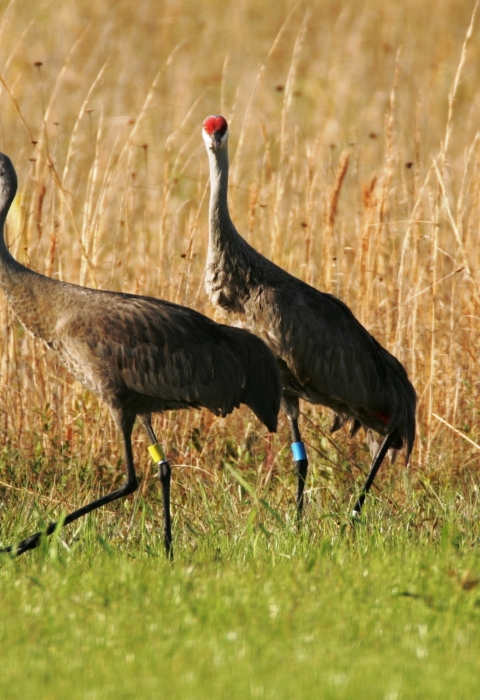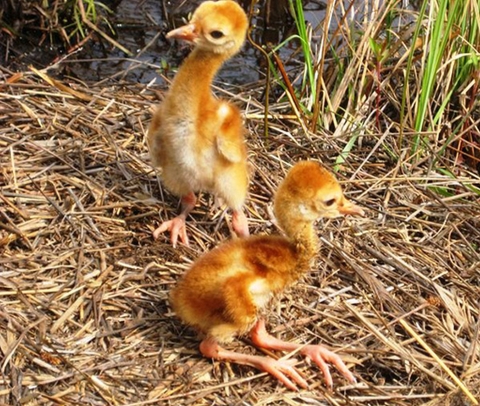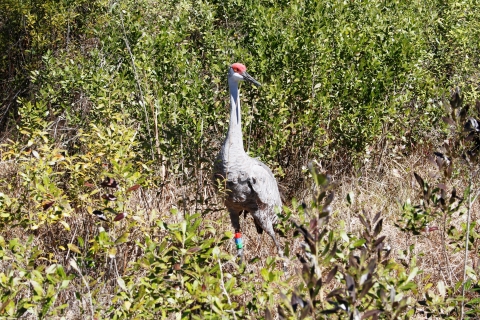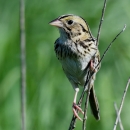Seasons of Wildlife
Fall – Winter: During the late fall/early winter, unpaired Mississppi sandhill cranes forge new pair bonds and establish their territory. Mated for life, established pairs are in a "courting phase" throughout winter where their bonds are reinforced and they prepare for nesting season. Winter is the best time to the highest diversity of other bird species, particularly overwintering grassland sparrows.
Late Winter – Early Spring- In late winter/early spring crane pairs generally lay two eggs. Both parents work together to incubate the eggs for about a month. This can be a precarious time for the nest, as there are many predators that are eager to make a meal of the eggs.
Spring - The precocial Mississippi sandhill colts (chicks) are hatched. The colts are feathered and able to walk around soon after birth. This is also a great time to check out the diverse plant community on the refuge, with a showy display of wildflowers easily visible along the nature trails.
Summer- Young cranes are able to fly after about 70-80 days. The juveniles will remain with their parents for about about ten months, after which they will venture out on their own and eventually form a pair bond.
Featured Species
The refuge was established in 1975 under authority of the Endangered Species Act to protect the critically endangered Mississippi sandhill cranes and their unique, and itself endangered, wet pine savanna habitat.
The crane population, at that time only 30-35 birds, is currently at approximately 110 birds. Through captive rearing and reintroduction to the area as well as wild birds nesting in the savannas, the crane population continues to grow.
The refuge also protects and restores the last large expanses of wet pine savanna, primarily through the use of prescribed fire. The wet pine savanna is one of the most diverse ecosystems in the U.S. with more than 30 plants found in a square meter of land.



